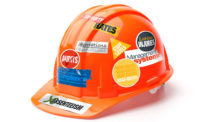Fear & insecurity stifle reporting illnesses & stressors
Millions of workers suffer in silence

Chronic pain we know about too well. The opioid onslaught has taught us that. The pressure to work through pain is real, particularly in industries with a macho ethos such as construction and oil and gas. But step back and look at a larger picture — chronic diseases — and the untold millions of adults who work through a chronic illness.
Generally incurable and ongoing chronic diseases affect approximately 133 million Americans, representing more than 40 percent of the total U.S. population, according to the National Health Council. Chronic conditions include arthritis, asthma, cancer, cardiovascular (heart) disease, depression and diabetes. Though not a chronic disease, about 40 million Americans suffer from long-term sleep disorders each year, according to the National Institute of Neurological Disorders and Stroke. The safety implications of sleep deprivation are self-evident.
About 38 million prescriptions for Ambien and other sedatives were written between 2006 and 2011, according to IMS Health. More than half a million people in the U.S. currently abuse sleeping pills, as estimated by the National Survey of Drug Use and Health. Again, the safety implications are obvious.
Prescription avalanche
Back to the Big Picture. In 2016, about 4.45 billion — billion — prescriptions were issued across the U.S. Go to any pharmacy today and it’s the proverbial beehive of rushed activity with often stressed-out pharmacists filling order after order. Adults wait in lines for their meds, drive up in their cars to dispensary windows, and get packages of meds through the mail. In 2013, patients between 50 to 64 years had an average of 19.2 prescriptions per person, according to the Mayo Clinic. The most commonly prescribed drugs were antibiotics, anti-depressives, and yes, painkillers.
Each year, an estimated 154 million prescriptions for antibiotics are written in physicians’ offices, hospital emergency rooms, and the ubiquitous urgent care centers. Millions of adults mistakenly take antibiotics to fight a cold, flu or cough – antibiotics cannot treat these types of viral infections. Antibiotics are correctly prescribed to fight strep throat, bronchitis, pneumonia, urinary tract infections, ear infections, and sinus infections.
Relating to safety and health in the workplace and the issue of “presenteeism” – how many of these sick adults show up for work, regardless of their condition? The consequences can be spreading infectious diseases to coworkers, being distracted by discomfort and less situationally aware, which of course can lead to accidents and injuries, and naturally being less productive and engaged in one’s work.
Sick and insecure
There’s pressure to work through pain, and indeed there is unspoken pressure to work through sicknesses. Many adults, especially as they get older, and feel perhaps more vulnerable to layoffs, buyouts or generally less secure in their jobs, while putting kids through college and paying off credit card debts and loans of all varieties, are loathe to take time off. Even when they are well, many work while on vacations and during holidays, sending and receiving emails, texts and making and taking phone calls. In numerous pockets of Corporate America there is a culture of being accessible, available and connected 24/7/365. It’s a productive culture, but not a long-term healthy one, where burn-out is the end product.
Hide & don’t seek help
There is also unspoken pressure to hide and work through mental health illnesses. By 2017, the percentage of Americans taking antidepressants increased 65 percent in the past 15 years. According to the Centers of Disease Control and Prevention (CDC), about one in nine Americans of all ages reported taking at least one antidepressant in the past month. In the late 1980s, less than one in 50 people did. One reason for the continuing popularity of antidepressants is the practice of giving patients these medications for non-depressive diagnoses, such as anxiety, sleep and neuropathic pain. But true depression is enormously widespread. More than 300 million people globally suffer depression, according to the World Health Organization (WHO). The condition is the leading reason why workers go on disability – that’s when their medical coverage allows it.
But the cultural stigma to silently suffer through mental illness persists, especially in John Wayne’s suck-it-up United States. Three in ten people in the U.S. admit they are embarrassed to talk to other people about their anxiety, depression or stress, according to research by Ipsos. If anxiety, depression or other stressor reach the point of diminishing one’s work performance, it’s certainly no surprise that most (60 percent) of those suffering don’t want to talk to the boss about it. It’s fear. Fear of being laughed at, seen as being weak, losing chances for a promotion, the problem going into their file, and being seen as unwilling to be a “good soldier” and carry on.
The lonely EAP counselor
These are the same reasons hardly anyone uses a company employee assistance program (EAP), even though they are usually free. Most (97 percent) large corporations with more than 5,000 employees offer EAP counseling. About 75-80 percent of medium-sized and smaller companies make EAP services available to employees. Still, only about 6.7 percent of workers avail themselves to EAPs, according to research.
A primary reason for this disengagement is again fear. In this day and age where there seems to be no privacy, employees are worried that divulging personal information may somehow be leaked to management and coworkers. This despite the fact that EAP services are confidential and information is released to supervisory personnel only with the employee’s written permission. Only an issue that threatens safety, such as someone struggling with alcoholism who operates heavy machinery, will be released – with the employee’s consent. Otherwise, employers are never even to be notified when an employee uses EAP services for any reason.
Sick and distracted
Bottom line: the workplace safety and health community has been made well aware of the dangers of opioid medication abuse in recent years. There is far less awareness of the millions of workers who show up on the job every day medicated with a prescription that may be totally innocuous, or could potentially put coworkers at risk of infectious disease or working with someone distracted by sickness and fear. Safety and health pros know well the dangerous of distracted driving; being distracted by pain, sickness and chronic suffering is also a threat. Mindfulness, situational awareness, alertness and agility – both mental and physical – can be degraded.
It would help if at safety meetings and through other communications the fear of self-reporting illness and distress, the stigma of mental health issues, and the reasons EAPs are seldom used was aired out. Don’t expect employees to voluntarily bring up their fears and mistrusts; safety and health pros are going to have to start the conversation. It’s about time.
— Dave Johnson, ISHN Editor,
Looking for a reprint of this article?
From high-res PDFs to custom plaques, order your copy today!




